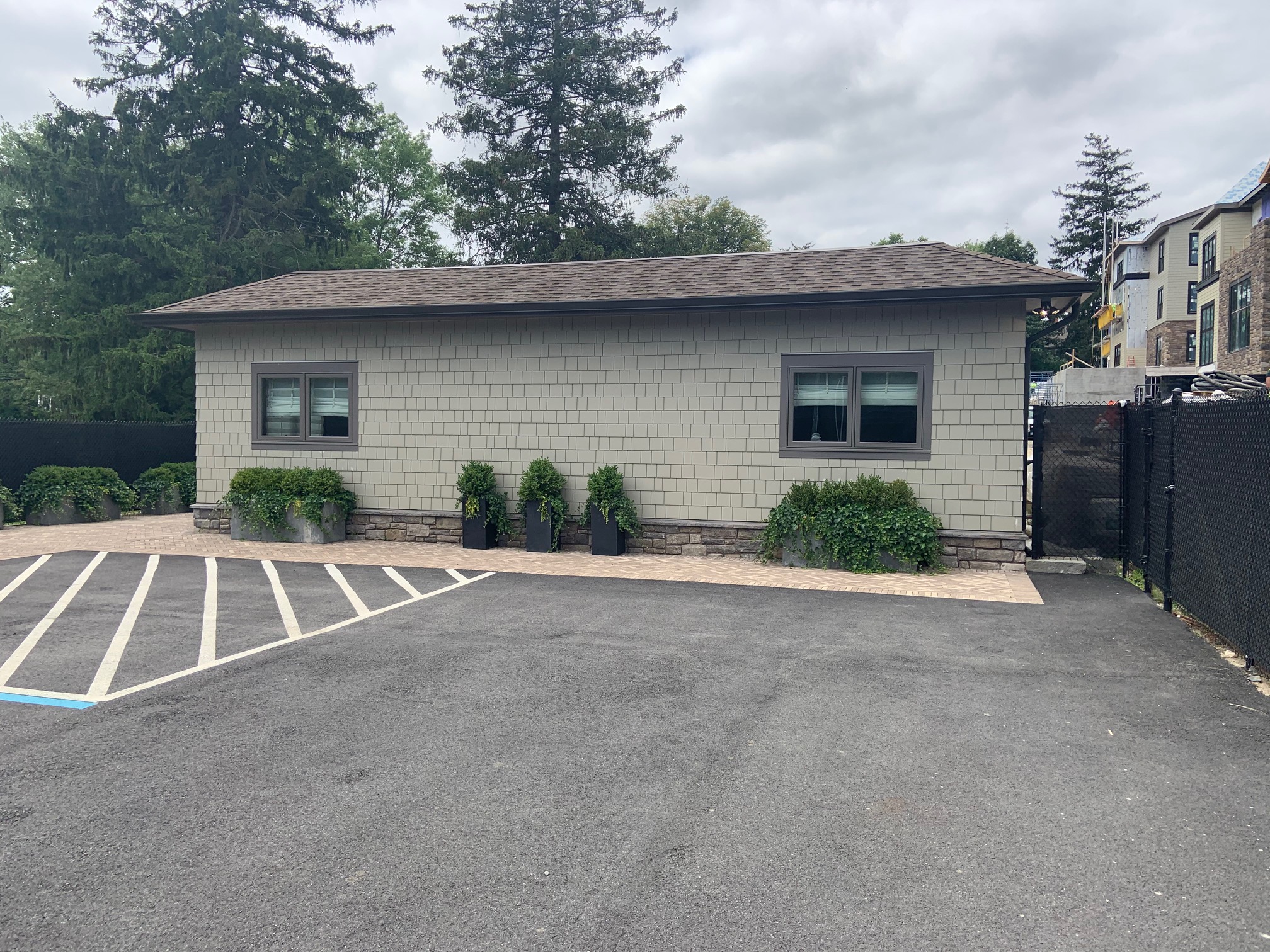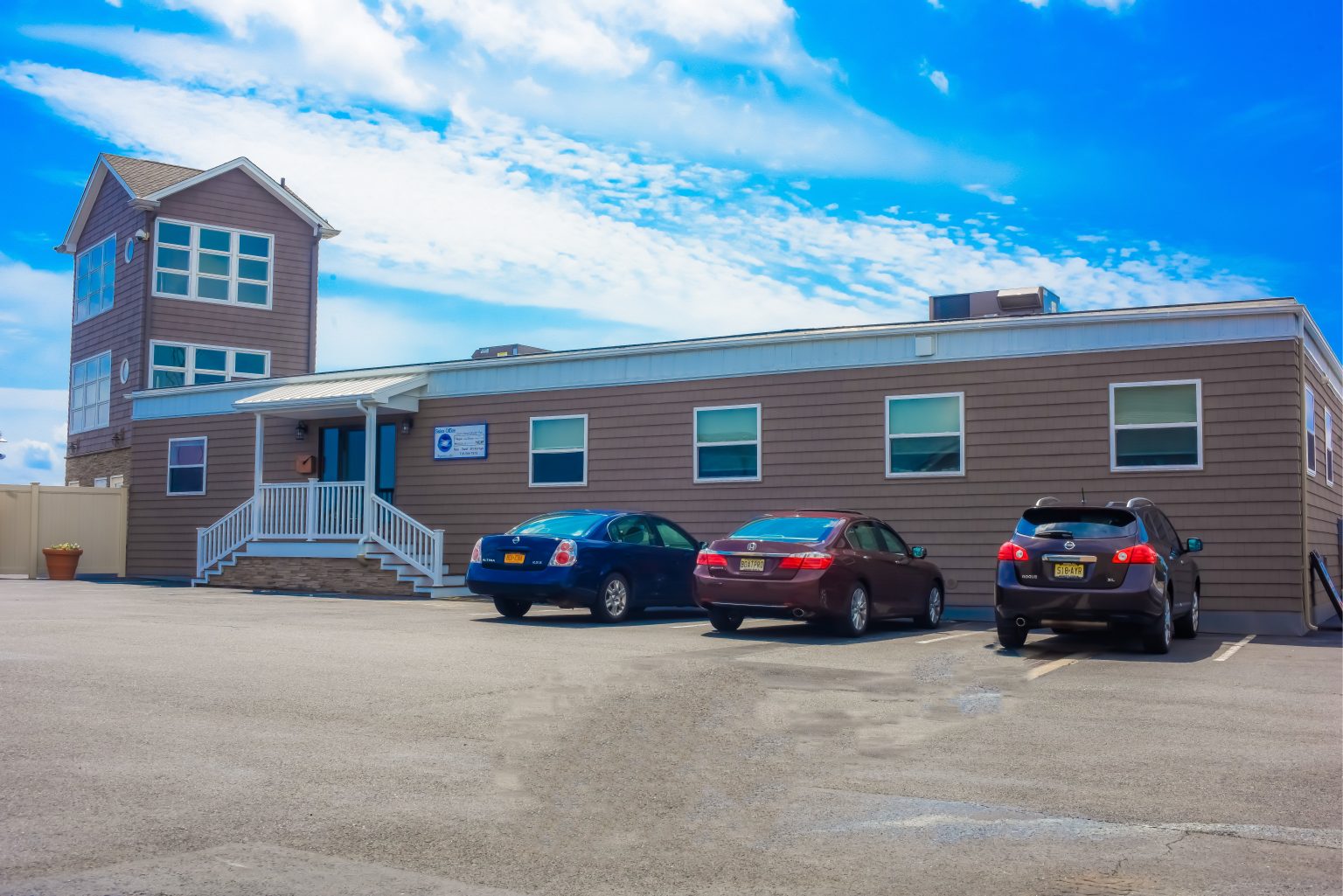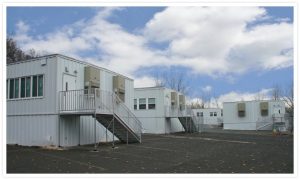A Guide to Temporary and Permanent Modular Buildings

Temporary and permanent modular buildings give the construction industry an easy and cost-effective way to increase productivity. Technological advancements in recent times have made way for quicker turnaround times and lower costs. However, while the number of modular buildings has increased significantly, only a handful of companies provide clarity to the construction process.
A Brief History of Modular Buildings
The construction and use of modular buildings is not new. One of the first modular homes came to life in the 1600s, when an American fisherman with roots in England got a disassembled home shipped from the UK to the United States. The California Gold Rush during the 1800s saw over 500 preassembled homes transported from New York to California. Their use became increasingly common after the Second World War.
By the 1960s, there was an increased demand for commercial modular building units in the form of offices, schools, hospitals, and more. Now, the need for building modular structures is more pronounced than ever.
What Is a Modular Building?
The construction of modular buildings takes place offsite in production lines under highly controlled conditions. They are then transported to desired locations in pieces and assembled/seamed together onsite. What also helps is you get different modular building floor plans from which to choose. Depending on the specifics of any particular project, 60% to 90% of the work can be completed offsite. This can be in the form of modular sub-assembled units or complete structures.
What Are the Principles of Modular Construction?
Offsite modular construction companies make prefabricated modules by using different manufacturing techniques. Stacking such modules one above the other or placing them side-by-side is possible. While some modular construction companies rely on traditional modular building systems and methods, others have turned to the use of automated robotic assembly lines.
The use of modern technology such as building information modeling (BIM), 3D printing, and augmented reality is also becoming common in building modular structures.
Modular buildings need to follow the same building codes as ones built onsite, which ensures that they rely on high levels of quality control. Offsite construction of modular units can take place practically anywhere, from the same city to even a different country.
What Are the Components of a Modular Building?
A typical modern modular office building leaves the factory as a three-dimensional structure, replete with floors, ceilings, and walls with desired finishes. It also comes with most of the required fixtures already installed. Construction of modular buildings is complete after the entire structure is put together using inter-module connections. In addition, just like any other building, a modular building needs a sturdy foundation and strong structural frame.
Temporary vs. Permanent Modular Buildings
You get two basic types of modular construction from which to choose. Permanent modular buildings involve offsite prefabrication of entire structures in deliverable module sections by using lean manufacturing techniques. While it’s possible to integrate these structures with existing onsite projects, they also serve the need for standalone buildings that come equipped with customized finishes and desired fixtures.
Temporary modular construction also relies on the same basic design, development, and manufacturing principles as permanent modular construction. The key difference is that it is possible to relocate temporary modular buildings. These buildings are designed to be repurposed or reused and can be transported to different locations based on manufacturers’ guidelines and local code requirements.
While permanent modular buildings are ideal for long-term requirements, temporary modular buildings work as the perfect solution when it comes to meeting fluctuating space requirements.
The iBox
Cassone’s iBox serves as a great example of what you may expect from a temporary modular building. The iBox comes in the form of a prefabricated module that works well as a standalone unit and it is also perfect for compounding and creating modular complexes. You may choose to stack up to three modules vertically, and there is no limit to how far you may go diagonally.
These modules with interchangeable wall panels have life spans of at least ten years and can go through a minimum of three assemblies and disassemblies. Each module comes with a power distribution box, power cables, power outlets, communications outlets, light switches, and fluorescent light fittings.
Benefits of Modular Construction
The reason you see an increased demand for temporary and permanent modular office buildings is the benefits they bring to the table. Advantages of modular construction include cost savings, reduced construction time, lower possibility of weather-related delays, no need for added space to store construction material, and reduced waste.
Accelerated Construction Time
With modular construction, any required site work, as well as the prefabrication in a factory, takes place in tandem. Without there being any negative effect on efficiency, this leads to quicker overall construction and saving of time. According to a report released by McKinsey, advancement in modular building technology has led to speeding up project timelines by 20% to 50%.
Minimized Weather-Related Delays
Since the fabrication of modular structures takes place inside factories with highly controlled environments, this aspect leaves little room for weather-related delays. Besides, workers benefit through more comfortable and safer work environments, which has a positive effect on their productivity.
Since temporary and permanent modular buildings get to desired locations with pretty much all required features and fixtures in place, instances of weather-related delays when getting them onsite and ready for use are largely minimized as well.
Lower Costs
According to the same McKinsey report, modular construction brings with it the opportunity to reduce costs by 20%. However, a 10% increase can be on the cards if logistics and material costs outweigh the savings in labor costs. Incidentally, an important benefit of modular construction surrounds labor costs. For instance, the cost of hiring skilled labor, which is often in short supply in cities, can be high for a variety of reasons.
Modular construction companies, on their part, give workers the ability to have stable jobs at fixed locations. Factories can be located with the aim of attracting competitive labor and benefitting through improved logistical connections as well. Potential long-term savings can also come in the form of reduced running and maintenance costs.
No Need for Added Space
Whether you need a permanent modular office building or a temporary modular classroom, you don’t have to worry about storing construction materials at your premises. Besides, storing and moving construction materials around is not easy. It may lead to clutter, can hamper the pace of work, and might even be susceptible to theft. Since modular building systems require little onsite work, there is no need to provide space for storage, and your location does not have to look like a traditional construction site.
Reduced Waste
Modular construction relies heavily on being environmentally friendly by reducing, reusing, and recycling. Large portions of modular units may be built using recycled steel, glass, and wood. Material left over from one project can find its way into another. Once deconstructed, which is easy to do, most parts of a modular structure may be recycled.
According to the Waste & Resources Action Programme (WRAP), a UK-based charity, it is possible to achieve up to 90% reduction in construction waste by minimizing the use of materials such as cement, bricks, concrete, timber, plasterboard, cardboard, and wood pallets. This is all too possible by relying on different types of modular construction.
Flexibility in Renting/Buying
If you have an additional space requirement that involves a large modular building and stretches over a year, renting or leasing might work well for you. This is because large modular buildings are best for long-term renting. If you feel your requirement might extend beyond three years, buying one might be the better alternative. When it comes to renting or leasing smaller modular buildings, you get considerable freedom with regard to time periods, ranging from a few months to years.
Customized Solutions
Modular structures give you the ability to choose from different size alternatives and features. Depending on what you’re after, you may expect your modular building to come with a heating, ventilation, and air conditioning (HVAC) system; customized walls and flooring; data and phone lines; as well as a floor plan that suits your requirements.
Possible Cons of Permanent Modular Construction
While permanent modular construction comes with various benefits, it comes with its share of possible drawbacks as well.
- Limited variety. Given the mass production approach that modular construction follows as of now, it is common for modular buildings to come in limited shapes and sizes. Where technology stands at this point, creating unique modular units would not lead to saving time or money. However, despite the fairly standardized modular structures, clients still get considerable freedom when it comes to design and customization.
- Getting approvals. Getting approval for permanent modular buildings can be tricky. Even though they are constructed offsite, they still need to meet local, state, and federal codes. Besides, some jurisdictions in the U.S. are friendlier toward modular construction than others. In New York, it is the responsibility of the modular unit manufacturer to make submissions to the New York State Department of State (NYSDOS) for approval.
- Not many manufacturers. Offsite modular construction companies have traditionally focused on building modular homes. While there has been an increase in demand for modern modular commercial buildings in recent times, there is significant room for growth in the number of manufacturers. From a client’s perspective, it becomes all the more important that you select a modular building company after ensuring that it’s proficient and well-equipped to handle your project.
- Transportation risks. Since modular buildings need to be transported from factories to their intended locations, riggers and transporters need to be extremely careful throughout the process. Even a slight error may lead to a mishap that causes extensive damage. While some types of damage are easy to fix, others are not. When you work with a reliable modular construction company, this is not so much of a concern.
- Need for expertise. You must partner with an offsite modular construction company that has engineers, architects, and contractors who are familiar with what modular fabrication and its assembly entails. For instance, when modules are stacked one above the other, it is crucial to ensure that they are aligned and connected in the right manner while accounting for compression.
Common Modular Building Uses
Given the ease of construction and the ability to scale up or down at will, permanent and temporary modular buildings now find use in different sectors.
- Industrial. Common uses of modular structures in the industrial field include administrative buildings, temporary offices, remote sales locations, restrooms, and cafeterias.
- Commercial. The demand for commercial modular buildings comes not just from businesses of different sizes, but from government agencies as well. Some of the purposes they serve include those of temporary offices, break rooms, conference rooms, sales offices, locker rooms, and retail spaces.
- Education. The use of modular buildings in education has increased significantly in recent times owing to limited space and increasing enrollment levels. It is possible to build modular classrooms with customized entryways and ramps so they adhere to the Americans with Disabilities Act (ADA).
- Healthcare. Modern modular buildings in the world of healthcare are capable of meeting stringent sanitation specifications. They are routinely found in disaster relief centers, refugee camps, and military bases. They also serve the purpose well when it comes to setting up clinics, labs, and clean rooms.
- Security. The use of modular structures in the realm of security does not limit to guard booths. They can also be used as dispatch offices and scale houses, making them ideal for events, industrial facilities, and parking areas.
- Housing. Modular homes have come a long way since they were first used. Now, you may expect a modular home to come equipped with appliances, carpeting, furniture, fixtures, and a bunch of other amenities. Customization of modular homes is usually an option.
- Places of worship. The need for additional space is all too common at places of worship, primarily because of growing congregations. Modular buildings can not only serve as offices for religious organizations but as prayer spaces as well.
Conclusion
Permanent modular construction is gaining quick traction in becoming a new industry norm primarily because of the efficiency factor. It offers multiple benefits for businesses and organizations of different types, and also works well from the environmental point of view. In large urban areas that tend to face labor problems surrounding cost and availability, moving to offsite modular construction can lead to significant savings.
Since modular structures are built in controlled environments using standardized techniques, they result in faster build times. High levels of quality control are there for the taking as well.
Whether you need a modular office building, classroom, retail space, or home, the outcome of your plan depends on the offsite modular construction company you select. Factors you need to address include expertise, use of modern equipment, cost-effectiveness, and predictability in scheduling.







